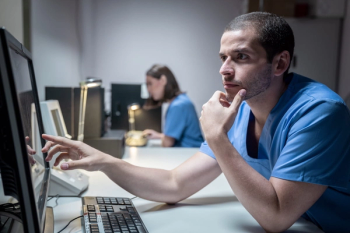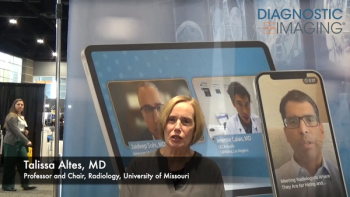
MRI Discovers Cartilage Regeneration in Runners
CHICAGO-MRI shows that the knee and ankle cartilage of long-distance runners can regenerate.
Ankle and foot cartilage can regenerate after ongoing endurance running, as seen by MR imaging performed on runners throughout a 64-day foot race, according to a study presented at the annual meeting of the Radiological Society of North America (RSNA).
Researchers from Germany continuously monitored 44 participants in the TransEurope FootRace (TEFR) to assess biomechanical changes, thickness and focal lesions of cartilage of the knee, ankle, and hindfoot joints, as well as changes in muscle mass.
"The fact that ultra-distance running places stress on the body has been well documented," coauthor Uwe Schütz, MD, radiologist and specialist in orthopedics and trauma surgery in the Department of Diagnostic and Interventional Radiology at the University Hospital of Ulm in Germany, said in a release. "Our research provides detailed information on how the various organ systems change and adapt in response to that stress."
Forty-four runners participated in the study, undergoing 15 to 17 scans over the course of the race, once every three or four days. The runners were also randomly assigned to additional examinations, and protocols were created for daily urine, blood, and other tests.
The results showed that with exception to the patellar joint, nearly all cartilage segments of knee, ankle, and hind-foot joints showed a significant degradation within the first 1,500 kilometers of the race:
• Ankle: 25.6%
• Subtalar joint: 20.9%
• Midtarsal joint: 26.3%
• Femorotibial joint: 25.1%–44%
However, a secondary decrease was observed in the ankle, subtalar joint, and midtarsal joint (-30.6%, 128.5%, and -16.0%, respectively), but not in the femorotibial joint. The researchers also found that there was a significant loss of cartilage thickness in the femorotibial joint, but not the others.[[{"type":"media","view_mode":"media_crop","fid":"43716","attributes":{"alt":"","class":"media-image media-image-right","id":"media_crop_9313179525256","media_crop_h":"0","media_crop_image_style":"-1","media_crop_instance":"4817","media_crop_rotate":"0","media_crop_scale_h":"0","media_crop_scale_w":"0","media_crop_w":"0","media_crop_x":"0","media_crop_y":"0","style":"float: right; height: 293px; width: 350px;","title":"MRI of participants’ feet. ©RSNA 2015.","typeof":"foaf:Image"}}]]
"Interestingly, further testing indicated that ankle and foot cartilage have the ability to regenerate under ongoing endurance running," Schütz said in the release. "The ability of cartilage to recover in the presence of loading impact has not been previously shown in humans. In general, we found no distance limit in running for the human joint cartilage in the lower extremities."
The soft tissues and bones also showed a significant increase of the diameter of the Achilles tendon. "We found no relevant damage to bone or soft tissues in the 44 runners," Schütz said. "The human foot is made for running."
As part of the study, the participants’ brains were also scanned, and findings with controls. There were no significant differences between the two groups, the researchers noted. Although the runners showed approximately 6.1% loss of gray matter volume at the end of the race, the gray matter volume returned to normal levels eight months after the race.
Newsletter
Stay at the forefront of radiology with the Diagnostic Imaging newsletter, delivering the latest news, clinical insights, and imaging advancements for today’s radiologists.




























